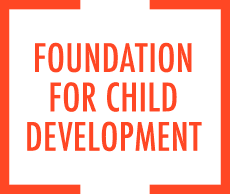https://www.fcd-us.org/race-ethnicity-and-immigration-report/
Diverse Children: Race, Ethnicity, and Immigration in America’s New Non-Majority Generation
There are significant disparities in the education, economic well-being, and health of children in the U.S. based on their race-ethnicity and whether or not their parents are immigrants, according to Diverse Children: Race, Ethnicity, and Immigration in America’s New Non-Majority Generation, the first report ever to draw these comparisons.
The report details the wellbeing of children in eight groups, distinguished by their race-ethnicity and whether they are children of immigrants or children of U.S.-born parents. It examines well-being across 19 key indicators that address family economic resources, health, educational attainments, and demographic circumstances.
“The data show the important advantages that immigrant families bring to this country and the strong foundation they give to their children,” says Donald J. Hernandez, author of the report. “But we also found evidence of enormous disparities in child well-being, along not only immigration lines, but also along race-ethnicity lines.”
Among the many findings, the report reveals that:
- Hispanic children with immigrant parents were found to be just as likely to live with a securely employed parent as Hispanic children with U.S.-born parents, and substantially more likely to live with two parents and to be born healthy. They are, nevertheless more likely to live in poverty, to lack PreKindergarten education and health insurance, and to die between the ages of 1 and 19.
- Children of immigrants (as compared to those with U.S.-born parents) in each of the race-ethnic groups, in fact, were found to be at least as likely to have a securely employed parent, more likely to be born at a healthy birth weight and to survive the first year of life, and more likely to live in a two-parent family. It is also true of each race-ethnic group that children of immigrants were found less likely to be covered by health insurance or to be enrolled in PreKindergarten.
- Hispanic children of immigrant parents and Black children of U.S.-born parents fell behind all other groups for nearly half of all indicators studied. They were most at risk of growing up in poverty or near-poverty, of living in a family with low median income, at highest risk for child mortality (ages 1-19), and least likely to have very good or excellent health.
- When it comes to education, all groups of U.S. children were found to be at risk, regardless of their race-ethnicity and whether their parents were born in the U.S. There were critically low rates of reading and math proficiency across the board; the lowest rates were for Hispanic and Black children. PreKindergarten enrollment was also low for all groups, and extremely low for Hispanic children — especially those with immigrant parents.
The report puts these findings in the context of a new milestone in U.S. history: Today’s population of American children is more diverse than ever, and children of immigrants account for one out of every four children in the United States; most children of immigrants (89 percent) are American citizens.
The report includes detailed policy recommendations for improving the lives and wellbeing of children, especially those most at risk. Recommendations include expanding access to and enhancing early education, removing barriers to health insurance so that all children are covered, and providing families with ways to improve their economic security and future prospects.
